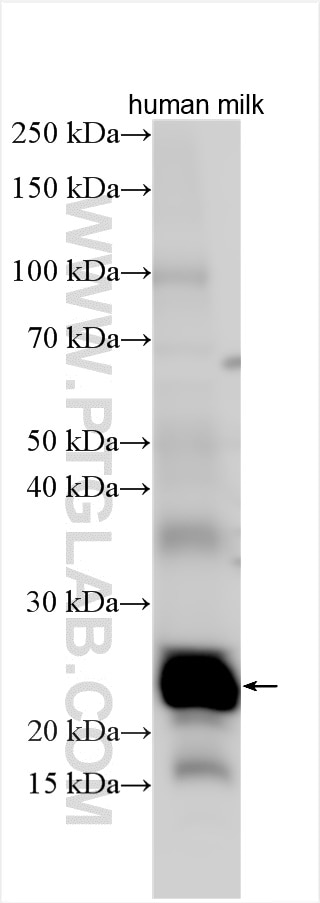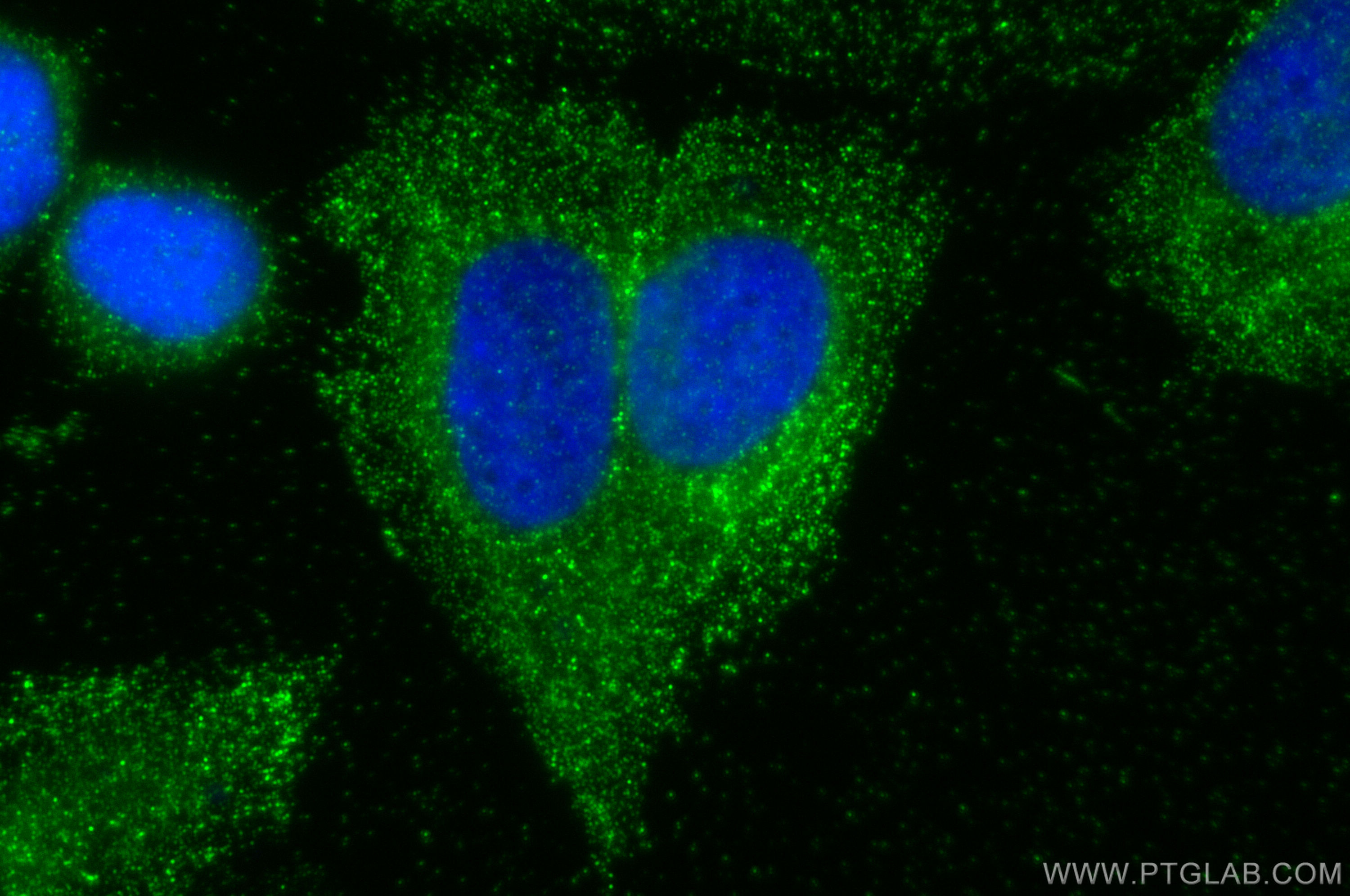SOSTDC1 Polyklonaler Antikörper
SOSTDC1 Polyklonal Antikörper für WB, IF/ICC, ELISA
Wirt / Isotyp
Kaninchen / IgG
Getestete Reaktivität
human
Anwendung
WB, IF/ICC, ELISA
Konjugation
Unkonjugiert
Kat-Nr. : 22213-1-AP
Synonyme
Geprüfte Anwendungen
| Erfolgreiche Detektion in WB | human milk |
| Erfolgreiche Detektion in IF/ICC | Saos-2 cells |
Empfohlene Verdünnung
| Anwendung | Verdünnung |
|---|---|
| Western Blot (WB) | WB : 1:500-1:2000 |
| Immunfluoreszenz (IF)/ICC | IF/ICC : 1:50-1:500 |
| It is recommended that this reagent should be titrated in each testing system to obtain optimal results. | |
| Sample-dependent, check data in validation data gallery | |
Produktinformation
22213-1-AP bindet in WB, IF/ICC, ELISA SOSTDC1 und zeigt Reaktivität mit human
| Getestete Reaktivität | human |
| Wirt / Isotyp | Kaninchen / IgG |
| Klonalität | Polyklonal |
| Typ | Antikörper |
| Immunogen | SOSTDC1 fusion protein Ag17538 |
| Vollständiger Name | sclerostin domain containing 1 |
| Berechnetes Molekulargewicht | 206 aa, 23 kDa |
| Beobachtetes Molekulargewicht | 23-26 kDa |
| GenBank-Zugangsnummer | BC008484 |
| Gene symbol | SOSTDC1 |
| Gene ID (NCBI) | 25928 |
| Konjugation | Unkonjugiert |
| Form | Liquid |
| Reinigungsmethode | Antigen-Affinitätsreinigung |
| Lagerungspuffer | PBS with 0.02% sodium azide and 50% glycerol |
| Lagerungsbedingungen | Bei -20°C lagern. Nach dem Versand ein Jahr lang stabil Aliquotieren ist bei -20oC Lagerung nicht notwendig. 20ul Größen enthalten 0,1% BSA. |
Hintergrundinformationen
SOSTDC1 (Sclerostin domain-containing protein 1), also known as Ectodin (Ectodermal BMP inhibitor), is a member of the sclerostin family. It is an N-glycosylated, secreted protein with a C-terminal cystine knot-like domain and is highly abundant in milk and kidney. This protein functions as a bone morphogenetic protein (BMP) antagonist. Specifically, it directly associates with BMPs, prohibiting them from binding their receptors, thereby regulating BMP signaling during cellular proliferation, differentiation, and programmed cell death.
Protokolle
| PRODUKTSPEZIFISCHE PROTOKOLLE | |
|---|---|
| WB protocol for SOSTDC1 antibody 22213-1-AP | Protokoll herunterladen |
| IF protocol for SOSTDC1 antibody 22213-1-AP | Protokoll herunterladen |
| STANDARD-PROTOKOLLE | |
|---|---|
| Klicken Sie hier, um unsere Standardprotokolle anzuzeigen |



